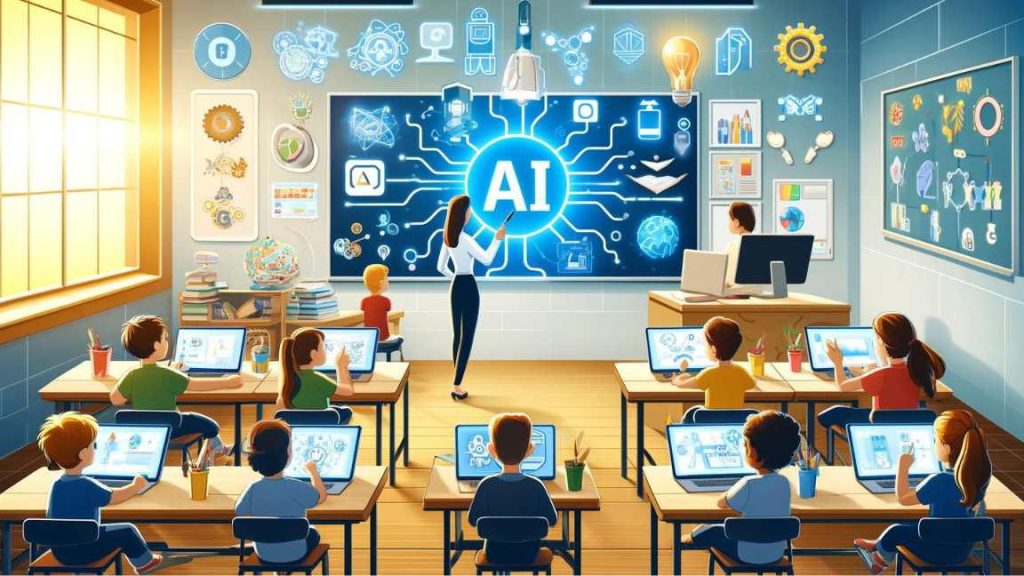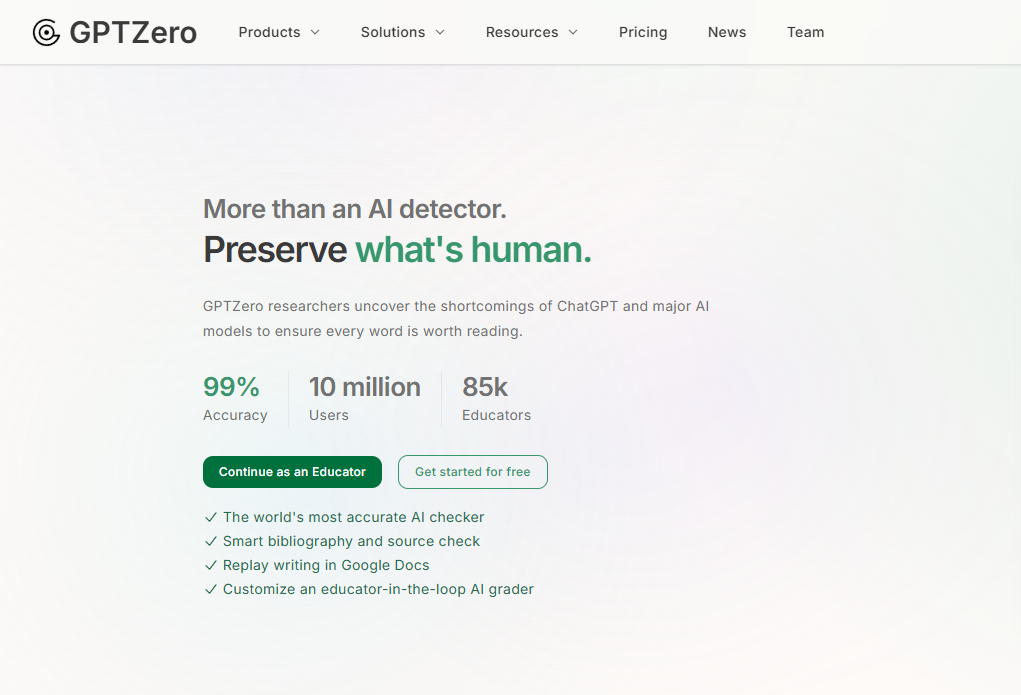How AI Is Reshaping Education: From Detection Drama to Billion-Dollar EdTech Booms
AI isn’t just knocking on the doors of education—it’s rewriting the rulebook. From reshaping how students learn to triggering a wave of startups, lawsuits, and detection wars, AI is transforming the education sector at every level.

A New Normal: Students Use AI, Educators Race to Catch Up
According to the 2024 Digital Education Commission, over 20% of students use AI daily, and more than half use it weekly. In the U.S., 89% of college students have used ChatGPT for assignments. As generative AI changes how knowledge is accessed and applied, educators are scrambling to keep up.
AI detection tools like GPTZero and Copyleaks have surged in popularity, aiming to uphold academic integrity. But ironically, these tools have triggered their own controversies—frequently flagging human-written content as AI-generated.

When Detectors Fail: “I Swear I Wrote This Myself!”
From TikTok to Reddit, students have documented their struggles being wrongly accused of AI cheating. One Houston student submitted 15 pages of time-stamped screenshots and even recorded herself writing a paper to prove her innocence. Another student at San Jose State faced accusations of AI use because his code was “too clean,” even after submitting detailed logs.
Misfires like these reveal the limits of current AI detectors. The lines between human and machine writing are increasingly blurred, and detection tools—based on statistical pattern recognition—are struggling to keep up.
Some students are now reverse-engineering proof of originality: using screen recordings, keyboard tracking, and even intentional typos to demonstrate “human fingerprints.”
AI vs. AI: The Detection Arms Race
As AI-generated text becomes more human-like, new detection approaches are emerging:
- WriteSonic introduced a plugin that tracks real-time edits and generates a report to validate originality.
- Research labs are experimenting with “cognitive fingerprinting”, analyzing typing patterns and pauses to distinguish between human and machine authorship.
But there’s a deeper issue here: a crisis of standards. What defines “original work” in an era of collaborative AI tools? While some professors embrace AI as a productivity enhancer, others strictly prohibit its use—sometimes even using AI themselves.
This inconsistency has sparked backlash. At Northeastern University, a student filed a lawsuit after discovering their professor used ChatGPT to create course materials. In other cases, professors used AI to grade essays without reading them.
Some institutions are embracing the shift instead of resisting it:
- American University’s business school requires AI use and tracks student thinking in Google Docs.
- Kennesaw State University mandates submission of drafts and revision logs.
- Others are returning to handwritten exams and oral assessments to evaluate unassisted thinking.
The underlying shift? Education is moving from memorization and output to critical thinking and process—and AI is both the catalyst and the challenge.
The Rise of EdTech Unicorns: AI Is Big Business
Beyond the classroom drama, AI is fueling a wave of profitable innovation in the education space. Here are four booming verticals:
1. AI-Powered Language Learning: Duolingo Leads the Pack
AI-driven language learning apps are seeing explosive growth. In 2024, Duolingo generated $748 million in revenue, a 41% year-over-year jump, with over 10 million paying users. The stock soared 43%, outpacing the Nasdaq.
Its GPT-4 features, including roleplay bots and interactive video calls, have boosted ARPU to $18.50/quarter. Other players in the space:
- Speak: $4.19M monthly revenue; dominates the Korean market.
- Praktika: $20M annual revenue; ranked #12 in U.S. education apps.
- Mondly: $9.8M/year; known for its offline multi-language support.
2. Learn AI with AI: Mindstone’s EdTech-as-a-Service Model
Mindstone offers AI literacy training for professionals, generating $200,000 monthly revenue. Targeting non-tech learners, it packages complex AI skills into 10-hour micro-learning modules on prompt engineering, GPT customization, and more.
Clients include major organizations like Hyatt and Pearson, and the platform is built on Google Cloud with Replit integrations for hands-on practice.
3. AI Cheating Tools Go Viral—and Get Funded
Controversial yet lucrative, AI-powered cheating tools are seeing massive traction. The app InterviewCoder went viral by helping job seekers ace coding interviews using real-time GPT-powered support.
Its creator, Roy Lee, reportedly earned $2.2 million in 50 days, and the startup raised $5.3 million in funding. Despite being expelled from Columbia University, Lee turned his scandal into influence, landing offers from Amazon and Meta.
4. AI Detection Tools Attract Millions in Funding
While AI cheating tools grow, so do the tools trying to stop them:
- GPTZero crossed 4 million users and raised $10 million in Series A funding. Its clients now include not just educators, but also government agencies, NGOs, and HR teams.
- Turnitin, a legacy plagiarism detector, now uses AI to identify generative content across 15,000 institutions worldwide.
- Copyleaks claims to detect obfuscated AI code and has raised over $8.4 million.
5. AI Homework Scanning Apps: Photomath’s $35M Success
Photomath, now part of Google, lets students solve math problems by snapping a photo. It handles everything from arithmetic to calculus and brings in $35M annually with over 50 million monthly active users.
Other fast-growing AI homework apps are scaling globally, proving that efficiency sells—especially to Gen Z learners looking for instant support.
AI Is Not Killing Education—It's Reinventing It
AI isn't a threat to education; it's a pressure test—and an opportunity. It forces a rethinking of what matters: not rote memorization, but critical thinking, creativity, and collaboration.
While the battle between AI cheating and AI detection continues, the real transformation is already underway. Educators and students alike are exploring new ways to learn, assess, and think—with AI as both the partner and the provocation.
As you know, in the end, the future of education won’t be about banning AI—it’ll be about learning to think alongside it.